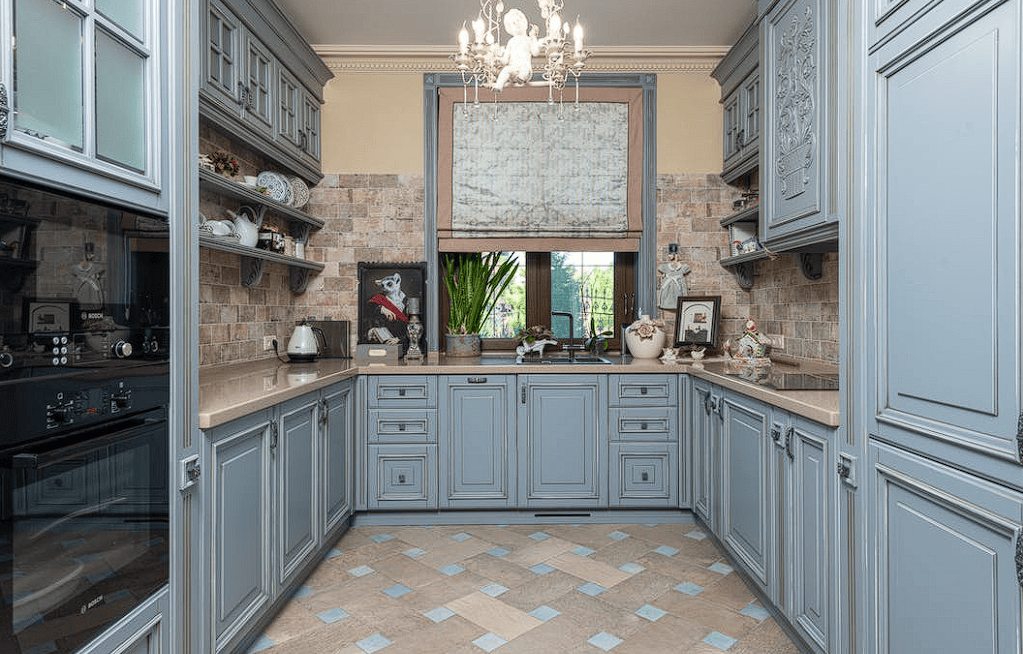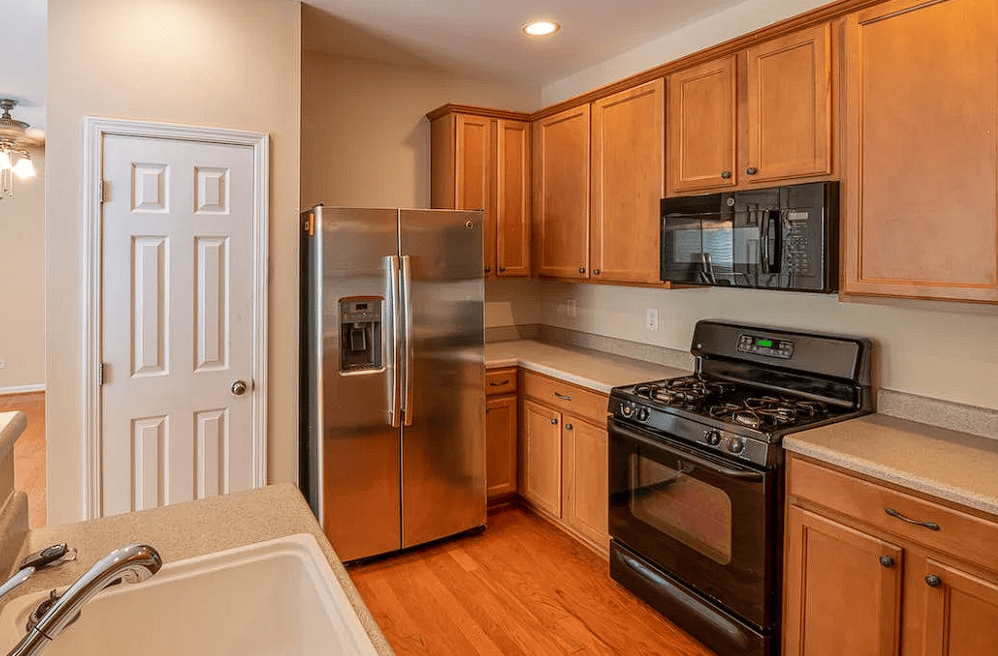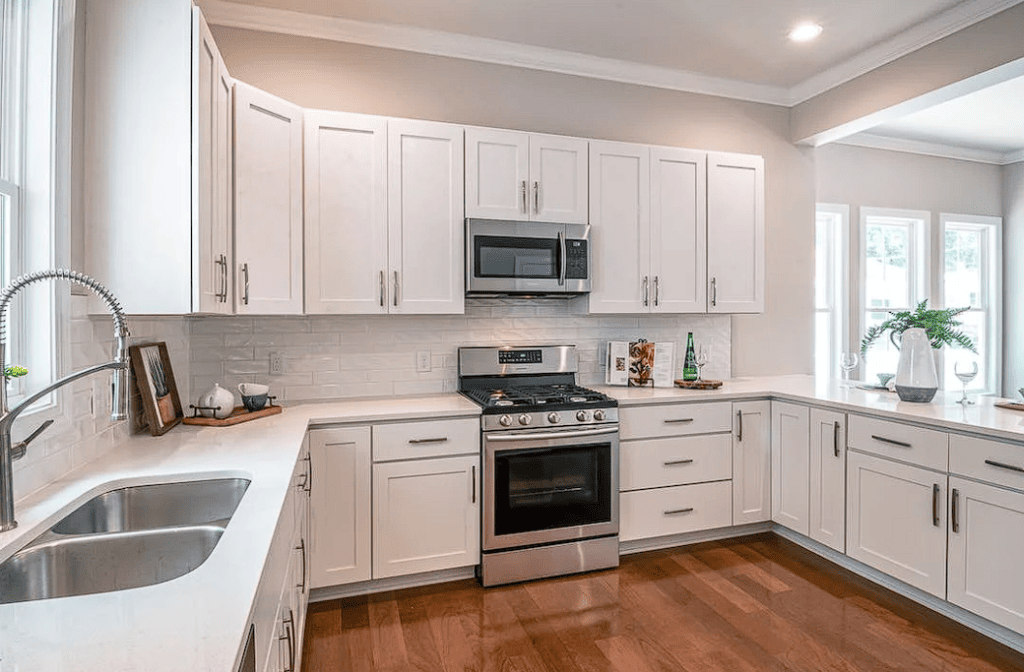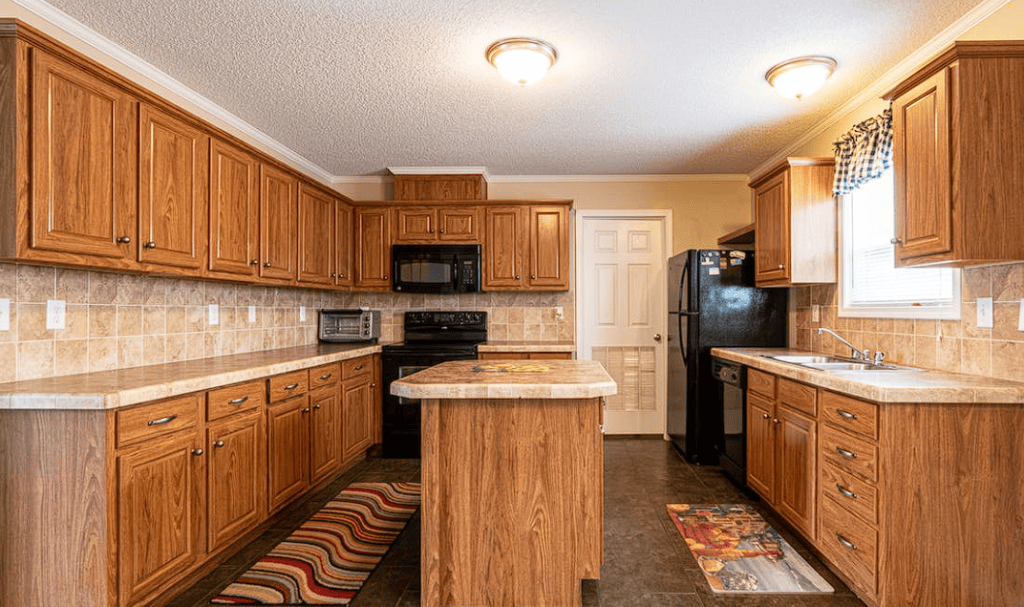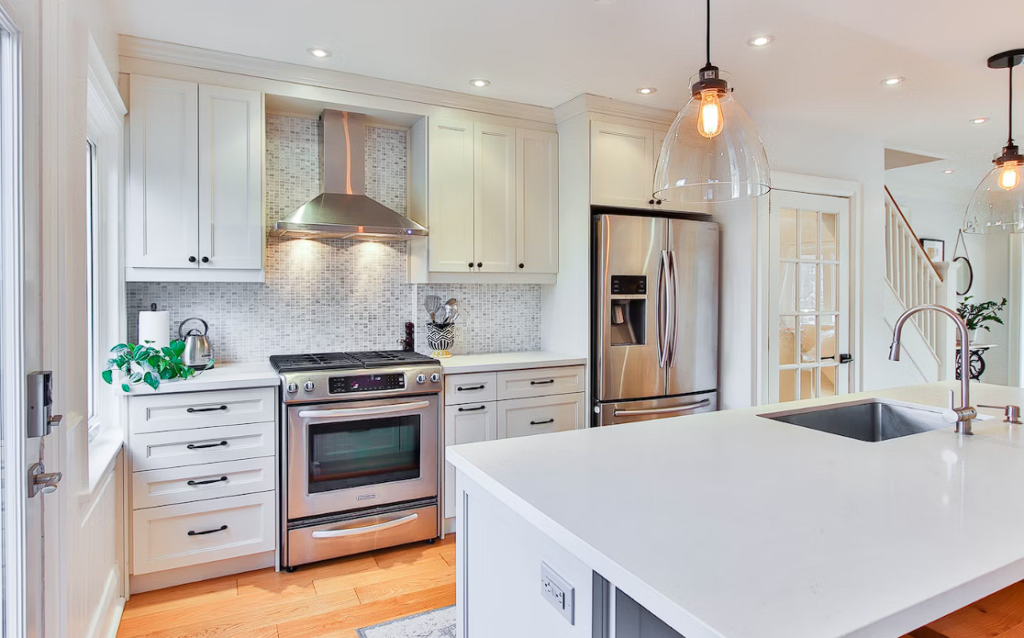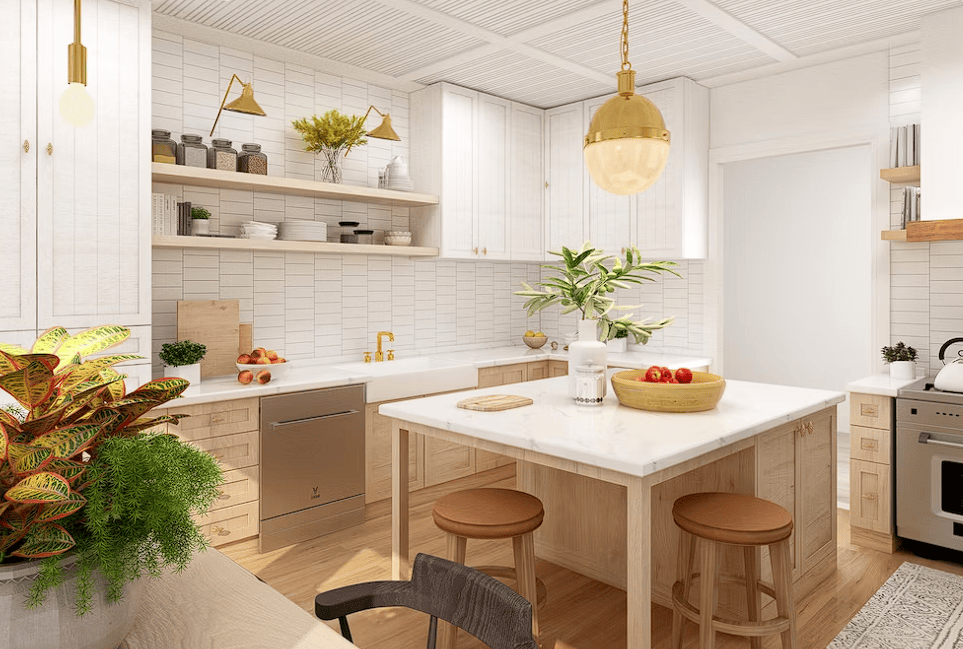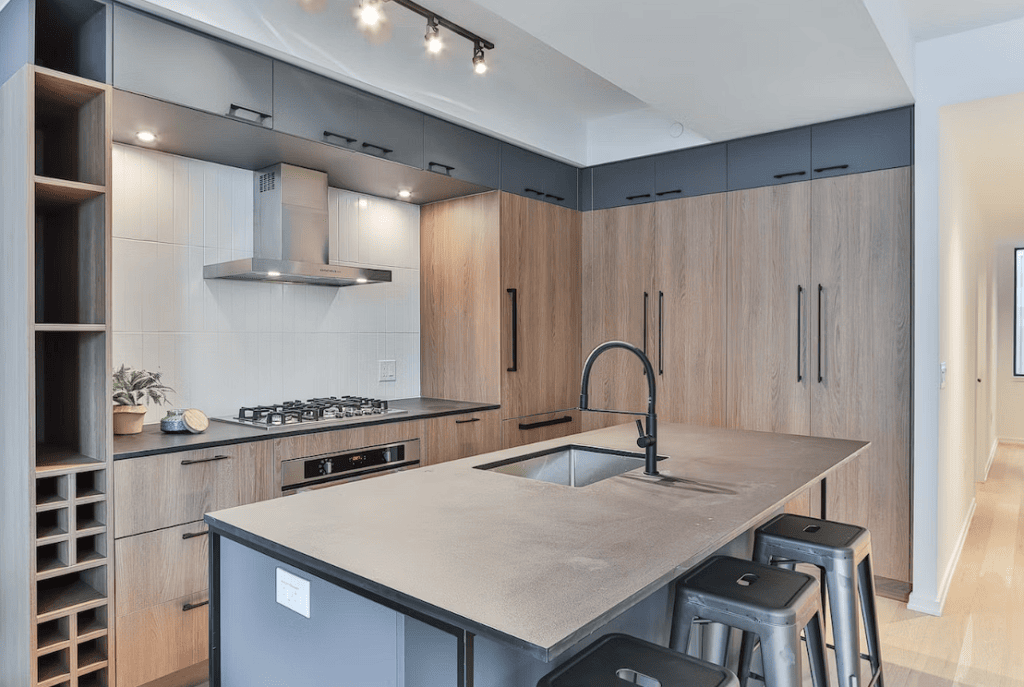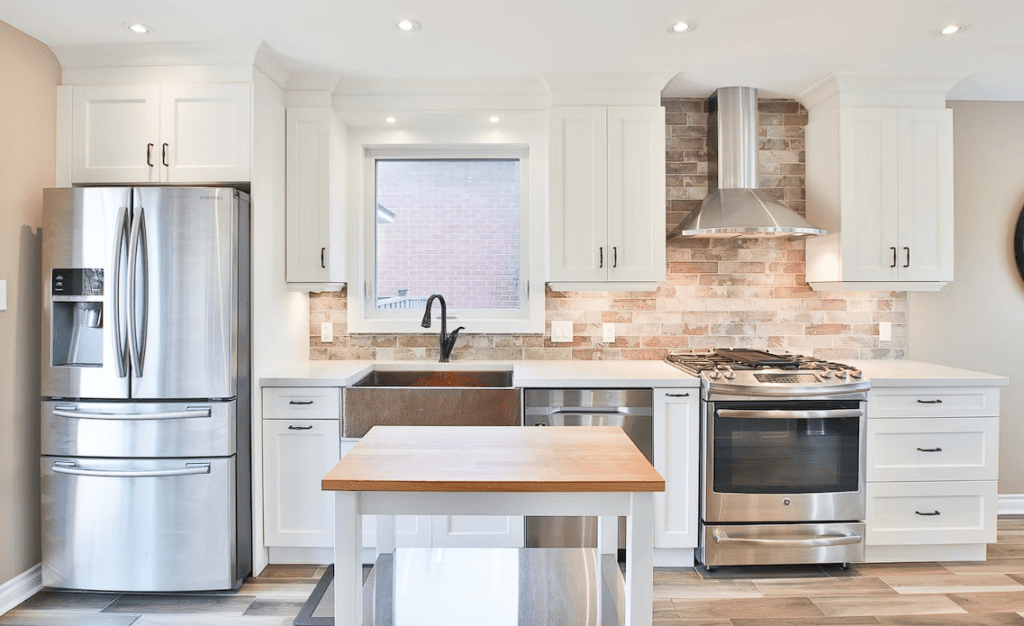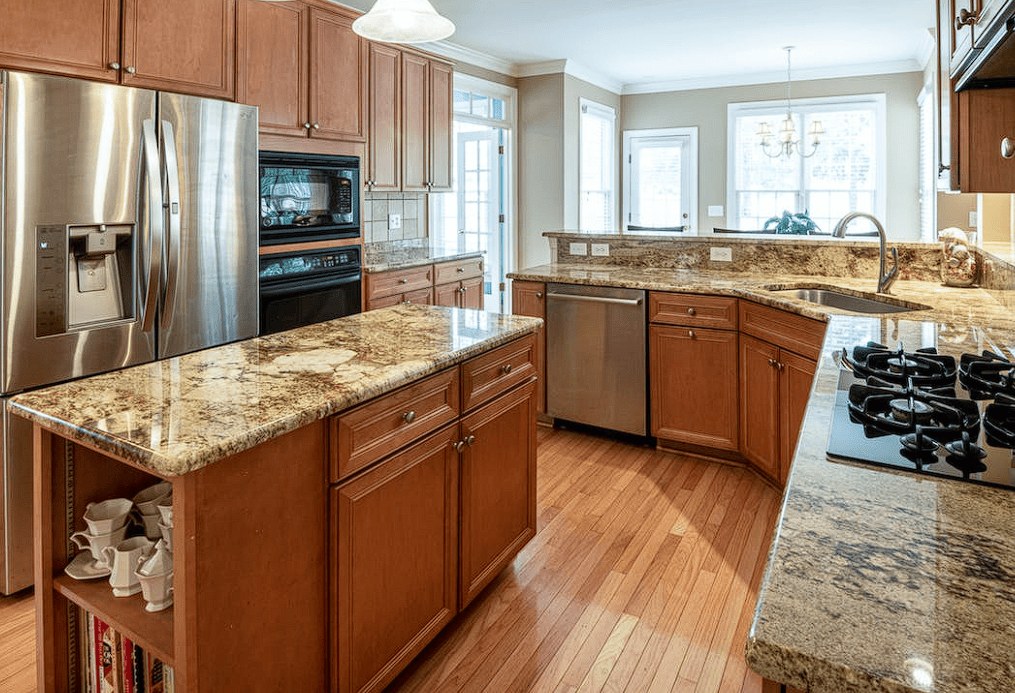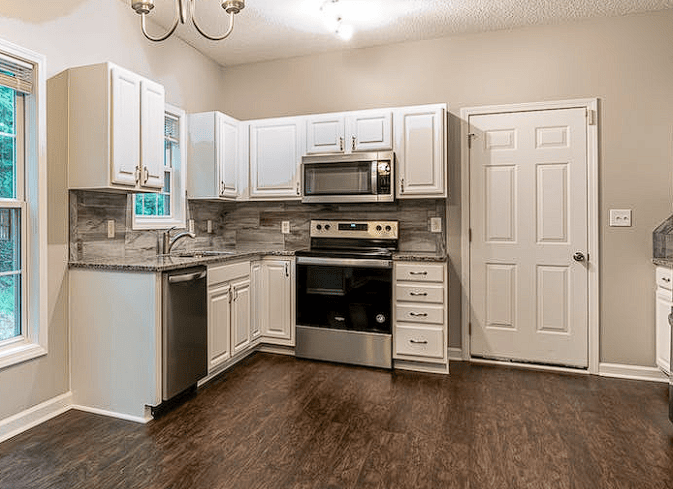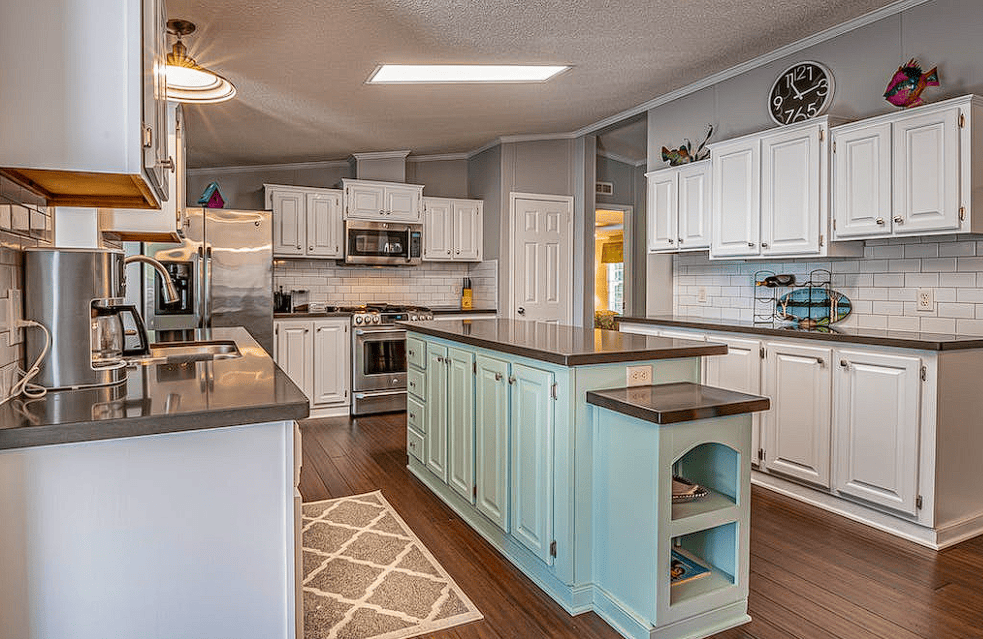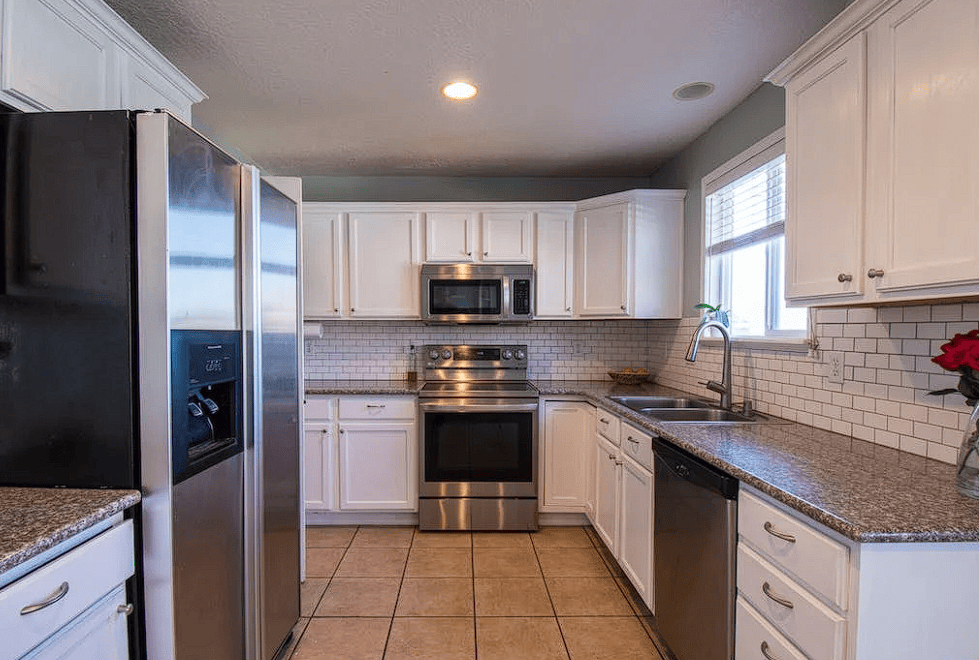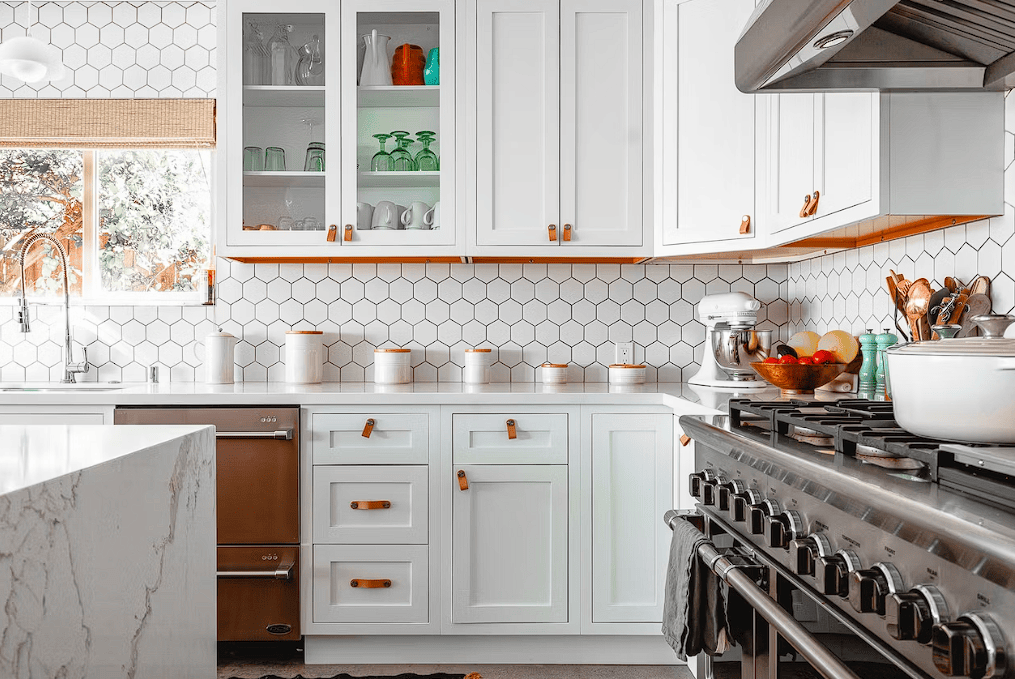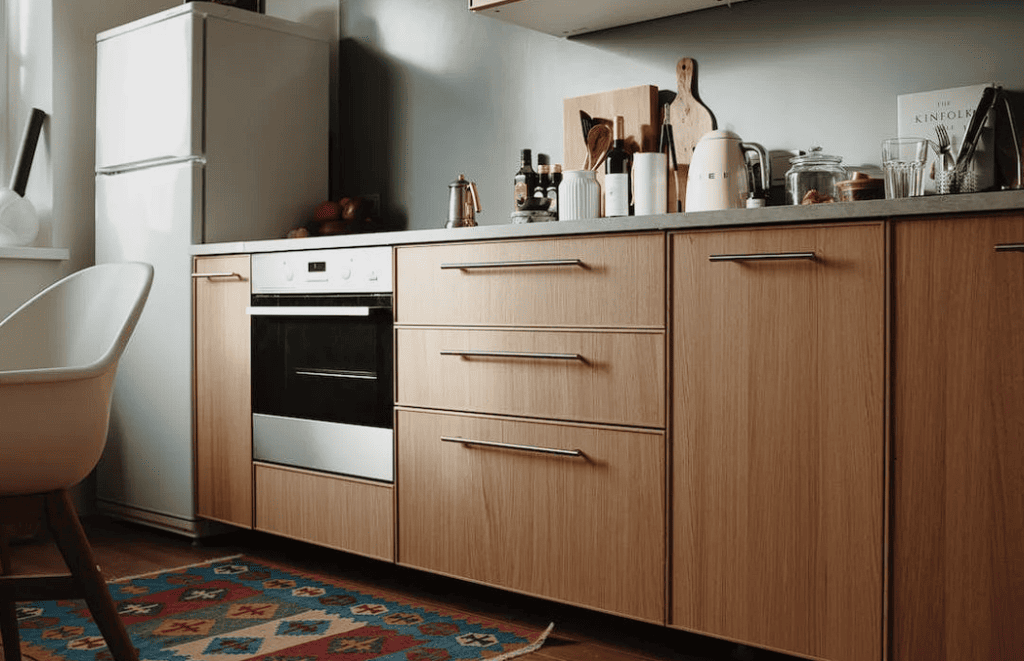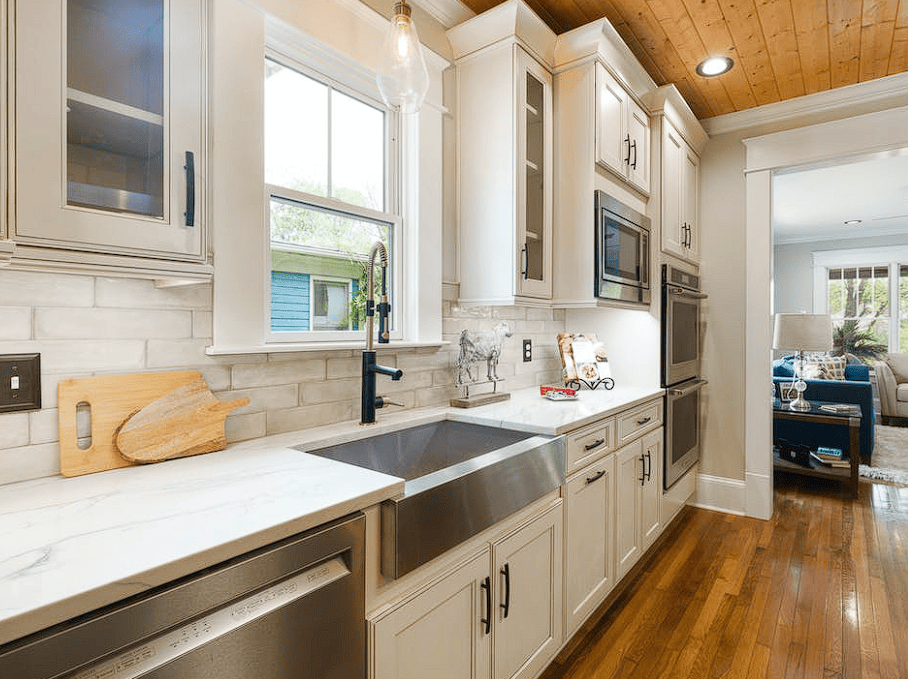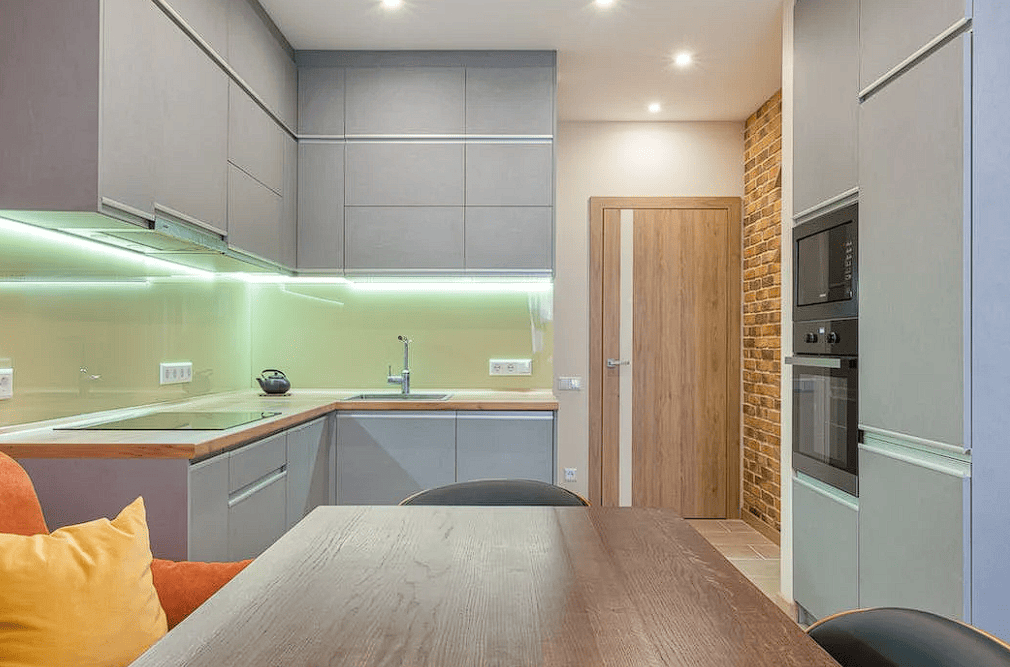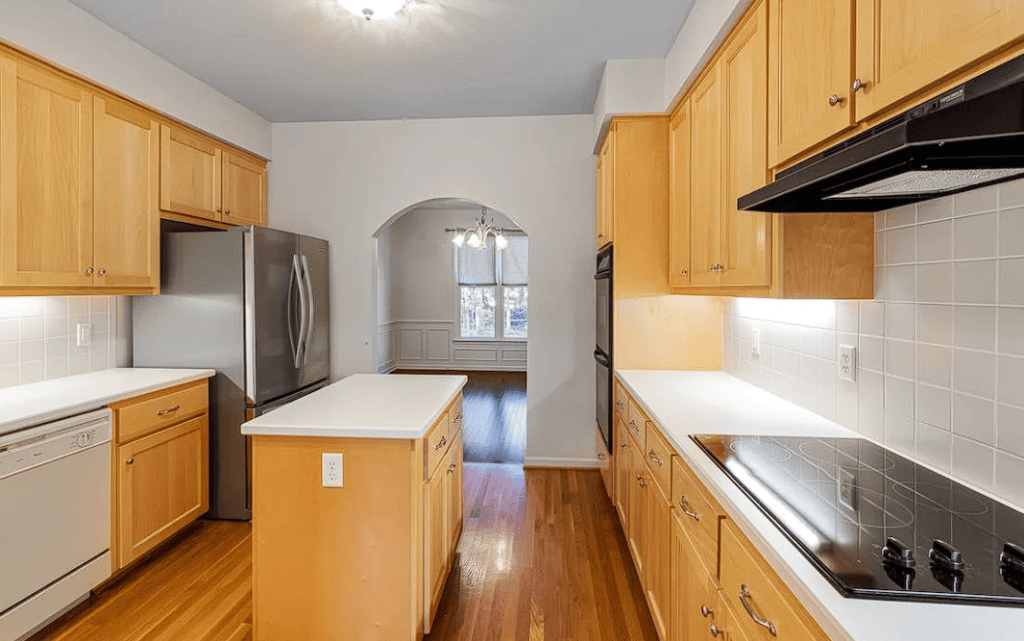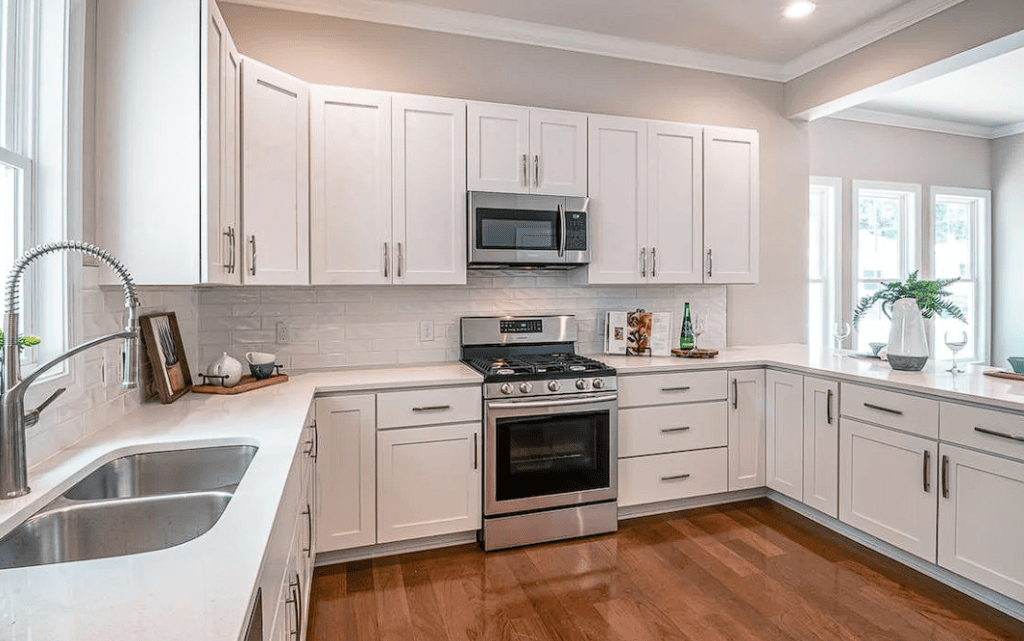Kitchen cabinet hardware, such as handles and knobs, should be carefully selected. These seemingly insignificant additions can have a major effect on how your cabinets look and function. With so many options, it's not always easy to figure out which hardware will serve your purposes and aesthetic preferences the best.
In this manual, you will learn about the various styles and materials available for cabinet knobs and pulls. We'll talk about how to pick the right hardware for your cabinets based on aesthetics, functionality, ease of use, durability, and more.
The manual will also include advice on how to install the hardware properly and how to make sure it matches the rest of your kitchen's fittings. Now that you have this knowledge, you can make an informed decision when purchasing cabinet hardware for your kitchen.
What Is Cabinet Hardware?
The knobs and pulls on your cabinets and drawers are examples of cabinet hardware. The hinges on a cabinet door are considered hardware as well. Cabinet hardware is primarily used for its intended purpose, which is to facilitate the opening and closing of cabinets and drawers.
Knobs and pulls are the most common types of hardware. Pulls are long and are typically used on drawers, while knobs are small and are used on cabinet doors. But you can dress up your drawers and cabinets with knobs and pulls... Nothing prohibits doing this.
Types Of Cabinet Hardware
At the outset, choose whether knobs, pull, or a combination of both will be used. Though it's not always the case, a cabinet knob or drawer pull will make it much simpler to open the corresponding cabinet or drawer. However, there are many cases where this is not the case. Bathroom baseboard cabinets, for instance, might benefit from having their drawer pulls mounted vertically. Small knobs, as opposed to a long pull, may provide just the right amount of visual impact when trying to improve the look of an already existing piece of furniture (like a side table or media console). Think about how each potential piece of hardware will fit into your daily routine.
- Knobs are less expensive, more versatile, and take up less space than handles on drawers and cabinets. Since only one screw is required to fasten the knob to the surface, they are slightly less difficult to set up than pulls.
- Pulls are larger than knobs, making them more noticeable and easier to grab. They're more expensive than pulls but come in many different sizes. They complement drawers and larger cabinets thanks to their linear design.
Types Of Kitchen Cabinet Handles
Kitchen cabinet, cupboard, and door handles can be found in a wide variety of designs and materials, so it's important to pick the one that looks best in your space.
Handleless
All drawers, cabinets, and cupboards have a push-to-open mechanism installed so that they can be opened and closed with ease. Cabinets, drawers, and cupboards without handles are popular choices for homeowners seeking a contemporary or ultra-contemporary design for their kitchens.
Edge Profile
Edge profile handles are great if you want your kitchen to look modern and clean. Edge profile handles are channelled bars that are attached to the edge of a drawer; to use them, you insert your fingers into the channel. In modern and minimalist kitchens, their slight projection creates the illusion that the cabinets have no handles.
Cabinet Knobs
Those who are partial to an antique aesthetic often favour cabinet knobs. Knobs are typically round and attached to the outer edge of a door's opening. They also come in a wide variety of animal and floral designs. Knobs look great on elaborate cabinet doors but are impractical for drawers because of their small surface area. In addition, knobs can become untight with repeated use; therefore, you should check them at regular intervals to ensure they are securely fastened.
Cup Handles
The addition of cup handles will help you achieve a more classic appearance. Cabinets and drawers with cup pull handles are strong and durable. They give off an air of sophisticated antiquity, whether they are brushed gold or antique brass.
Bar Handles
Handles on bars are minimalistic but practical. The long, rectangular bar shape makes them simple to grasp and manipulate. One of the classic pull-out handles on the market today, bar handles look equally at home in contemporary and classic kitchens.
T-Bar Handles
T-bar handles are similar to bar handles, except that they have a tube shape instead of a square one. T-bar pulls are a sleek addition to kitchens with flat, single-colour cabinet doors. This handle design is ideal for ultra-contemporary and contemporary kitchens.
Bow Handles
Bow handles, like other pull-out handles, are characterised by a grip that features a unique design, such as a wave pattern or a porcelain-like coating. They provide a nostalgic touch, making them perfect for classic kitchens.
Types Of Drawer Pulls
Cup Pulls
Cup pulls, also called bin pulls, resemble the domed handles on garbage cans and are the ideal size for a human hand. People adore these because they can make any room feel more rustic or classic. Use a polished nickel model to bring some life to your spare kitchen, or go for the rustic charm of brushed brass to finish off a cottage-style kitchen.
Handle Pulls
Pulls with handles, or bar pulls, are distinguished by their length. You can attach them to your cabinets with the help of a long metal bar and two shorter ones. They work wonderfully in an ultra-modern setting but are also a solid, reliable choice for any style.
Drop Bail Pulls
Drop bail pulls will take your modern kitchen back to a bygone era if you have an appreciation for antiques. In this design, the handle is attached to a hinged cabinet that can be raised and lowered. They were common in homes built in the late 19th and early 20th centuries and are still a great way to give any house a touch of class.
Finger Pulls
The short, downwardly curved handle of finger pulls makes it possible to open drawers and cabinets with just one or two fingers. Cabinet pulls in this style can give your kitchen an industrial look and feel or serve as a finishing touch in a more traditional setting.
Appliance Pulls
Pulls for appliances are just the handle pulls stretched out, and sometimes there are two of them instead of one.
Ways To Match The Right Hardware With Your Kitchen Cabinets
Knobs vs. Pulls: Know Your Terminology
Let's start from the ground up. Hardware for kitchen cabinets is easily accessible from any department selling household goods. Knobs are the tiniest type of handle and are typically fastened to the upper surfaces of shallow cabinets and drawers. The subtle sophistication they exude is stunning, but they aren't always the easiest to access in a pinch.
You can use your whole hand to pull open drawers and cabinets because pulls are attached in two places. One of the many types of pulls is an edge pull, which can be installed inconspicuously on the inside of your cabinet. There are two main types of pulls: bar pulls, which have a thin vertical or horizontal bar, and cup pulls, which have a cup-shaped hood that hides your fingers.
Locate the Perfect Match
Knobs, pulls, or both can be used interchangeably or together in the kitchen. Pulls are better suited for heavier drawers, but small knobs can look great on cabinets if you have the right setup.
If you need to open cabinets while cooking quickly, you might find vertical pulls easier to grasp. The same is true for drawers, with horizontal pulls being the most practical for longer, heavier drawers. However, there is no definite order in which they must be placed. The form of the hardware and the prefered approach to opening the cupboard or drawer will determine the outcome.
Imagine Your Optical Style
Knobs and pulls not only improve the functionality of your cabinets but also the overall look of your kitchen. Cup pulls from the past give cabinets a country feel, while long, sharp pulls are more at home in a modern or industrial kitchen. Whether you're going for subtle sophistication with edge pulls or bold proclamation with knobs, you have options.
Do you think it's important for your kitchen's hardware to match? Coordinating your cabinet hardware can have both positive and negative effects on your home. Mixing and matching knobs and colours can add visual interest to your kitchen. Pick up a set of colourful knobs from a thrift shop to draw attention away from boring cabinets.
Keep the Finish in Mind
To achieve a happy medium between eclectic and traditional decor, try combining knobs and pulls with the same finish. You are free to use a uniform metallic sheen on your taps, fixtures, and accessories.
One of the most significant factors influencing the cost of kitchen hardware is the type of finish it has. Most materials, such as wood, ceramic, plastic, and zinc, can be purchased for a couple of dollars at a time. Replace all the knobs and pulls in a kitchen can cost more than $500 if you want to use high-end materials like brass, copper, natural stone, glass crystal, or resin.
Spend more than you'd like on all the different pieces of hardware you'll need, but don't skimp on quality because it's important. Having hardware come loose while preparing a meal for a large group is a major hassle. The final product's quality and price should be taken into account.
Cabinet and Hardware Colours Should Match
Once you've decided on the style and finish for your kitchen cabinets, how do you choose the hardware colour to complement them? Keep in mind that colour has both aesthetic and functional value.
For instance, if you have white cabinets and want them to stand out, you can use black cabinet pulls. On the other hand, glass or silver knobs are a more understated choice for slate blue country cabinets.
The kitchen hardware you select, whether it's a muted shade or a striking contrast, can set the mood for the entire room.
Considering Size
Kitchen knobs and pulls can be a point of contention. Pulls are usually between 3 and 5 inches long, though in modern design, it is not uncommon to see pulls that extend the entire length of a cabinet. Knobs with a maximum diameter of 1-1/4 inches will work best on small or frameless cabinets. If you make them easier to get to, you won't have to open as many cabinets to get what you need.
Dimensions are also associated with the positioning of hardware. As we've already established, the best place to install knobs and pulls is in the upper corner of the base cabinets and the lower corner of the wall cabinets. Drawer pulls are typically affixed to the top one-third of the drawer front.
Enhance With Antimicrobial
One of the best uses for antimicrobial cleaning products is in the kitchen and bathroom, two of the most germ-ridden areas of the home. Stainless steel, copper, titanium, and silver are examples of antimicrobial metals because they inhibit the attachment of certain viruses and bacteria. Cooking and rummaging through the cabinets can be done with a little less stress, but they still require regular cleaning.
Remember Replacement
Keep in mind that it's not uncommon to have to replace kitchen hardware, so keep that in mind as you delve into the rabbit hole of shape, colour, finish, and vintage versus modern. You might have to go on a hunt for that brass knob sometime in the next decade due to design shifts and general wear and tear. Choose a common enough design that parts are readily available to replace it if anything goes wrong. If you want to go for a mismatched, quirky look, come up with a scheme that can be easily updated with a new, exciting find.
Conclusion
Kitchen cabinet hardware, such as handles and knobs, should be carefully selected. This manual will discuss the various styles and materials available for cabinet knobs and pulls, as well as how to properly install the hardware and make sure it matches the rest of your kitchen's fittings. Cabinet hardware is primarily used for its intended purpose, which is to facilitate the opening and closing of cabinets and drawers. Types of cabinet hardware include knobs, pulls, or a combination of both. It is important to consider how each piece of hardware will fit into your daily routine when purchasing cabinet hardware.
Knobs are less expensive, more versatile, and take up less space than handles on drawers and cabinets. Pulls are larger and easier to grab but come in many different sizes. Types of kitchen cabinet handles include handleless, edge profile, cabinet knobs, cup handles, and bar handles. Knobs are typically round and attached to the outer edge of a door's opening, while cup handles are strong and durable. Bar handles are minimalistic and practical and look equally at home in contemporary and classic kitchens.
T-bar handles, bow handles, cup pulls, handle pulls, drop bail pulls, finger pulls, and appliance pulls are all types of kitchen handles. T-bar handles are ideal for ultra-contemporary and contemporary kitchens, while bow handles are ideal for classic kitchens. Cup pulls are the ideal size for a human hand, while handle pulls are distinguished by their length. Drop bail pulls are a bygone era, while finger pulls are an industrial look and feel. Appliance pulls are just handle pulls stretched out.
Knobs are the tiniest type of handle and are typically fastened to the upper surfaces of shallow cabinets and drawers. Pulls are attached in two places and can be used interchangeably or together in the kitchen. There is no definite order in which they must be placed, but the form of the hardware and the preferred approach to opening the cupboard or drawer will determine the outcome. Mixing and matching knobs and colours can add visual interest to the kitchen. To achieve a happy medium between eclectic and traditional decor, try combining knobs and pulls with the same finish.
The type of finish of kitchen hardware can have a significant impact on the cost of kitchen hardware. High-end materials like brass, copper, natural stone, glass crystal, or resin can cost more than $500 to replace all the knobs and pulls in a kitchen. To complement the style and finish of the kitchen cabinets, the hardware colour should match the style and finish. The size of the kitchen hardware should also be taken into account. Knobs with a maximum diameter of 1-1/4 inches are best for small or frameless cabinets, while knobs and pulls should be installed in the upper corner of base cabinets and the lower corner of wall cabinets.
Antimicrobial cleaning products can be used to reduce the stress of cooking and rummaging through the cabinets. Choose a common design that parts are readily available to replace it if anything goes wrong.
Content Summary
- Cabinet hardware includes knobs, pulls, and hinges.
- Kitchen cabinet hardware affects the look and function of cabinets.
- The selection of cabinet hardware should be based on aesthetic and functional preferences.
- Different styles and materials are available for cabinet knobs and pull.
- Proper installation and matching of the hardware with the rest of the kitchen are essential.
- Knobs are smaller and less expensive than handles.
- Knobs are easier to install as they require one screw.
- Pulls are larger and more noticeable, making them easier to grab.
- Pulls come in different sizes and complement drawers and larger cabinets.
- Cabinet, cupboard, and door handles come in a variety of designs and materials.
- Handleless cabinets, drawers, and cupboards have a push-to-open mechanism.
- Edge profile handles are channelled bars that are attached to the edge of a drawer.
- Cabinet knobs are typically round and attached to the outer edge of a door's opening.
- Cup handles give off a sophisticated antiquity look.
- Bar handles are minimalistic and practical.
- T-Bar handles are sleek and ideal for contemporary kitchens.
- Bow handles provide a nostalgic touch and are perfect for classic kitchens.
- Cup pulls resemble the domed handles on garbage cans.
- Handle pulls are distinguished by their length and are great for modern settings.
- Drop bail pulls are attached to a hinged cabinet and are common in late 19th-century homes.
- Knobs are less durable than handles.
- Handles are more durable than knobs.
- Small knobs are ideal for furniture like side tables and media consoles.
- Vertical drawer pulls are great for bathroom baseboard cabinets.
- Cabinet hardware facilitates the opening and closing of cabinets and drawers.
- Cabinet hardware comes in different styles and materials.
- The selection of cabinet hardware should consider aesthetics, functionality, and ease of use.
- Cabinet hardware installation should be done correctly.
- The cabinet hardware should match the rest of the kitchen's fittings.
- Cabinet hardware can transform the look and feel of a kitchen.
Frequently Asked Questions
Cabinet pulls are long, thin handles that are attached to the cabinet door or drawer with screws. Knobs are round or square-shaped and attach to the cabinet in the same way.
Cabinet pulls and knobs can be made from a variety of materials, including metal, wood, glass, ceramic, and plastic.
The size of the pull or knob should be proportionate to the size of the cabinet door or drawer. Larger doors and drawers typically require larger hardware.
Cabinet pulls and knobs do not necessarily need to match other kitchen hardware, but they should coordinate in terms of style and finish.
Cabinet pulls and knobs can be easily installed with a drill and screws. Be sure to measure and mark the placement of the hardware before drilling.

